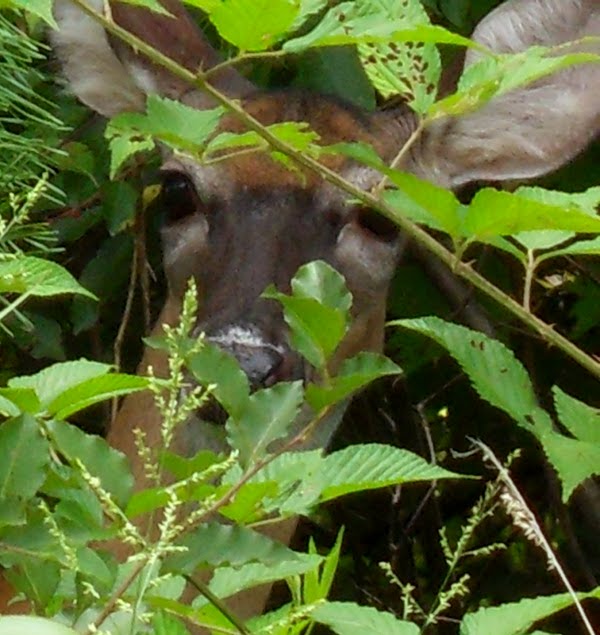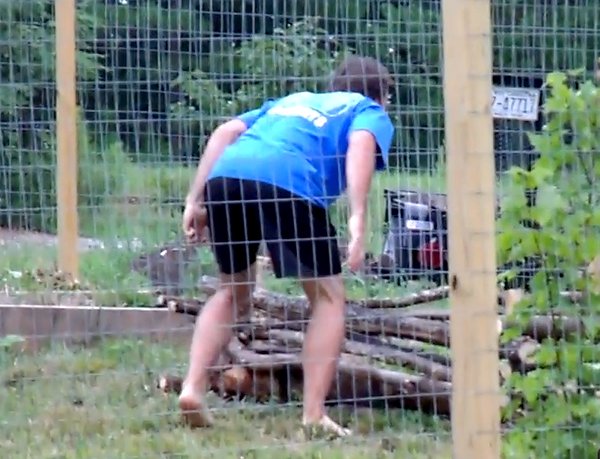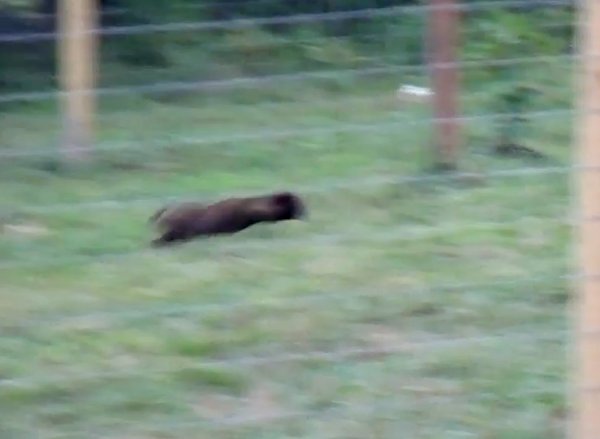Ken Ilgunas with the mushroom logs — all done except for the deer protection
Acorn Abbey has only five acres. But on those five acres, it’s amazing how many microclimates there are. Only an acre is open to the sun. That’s where the house and garden are. There are four acres of woods, with a small stream flowing between two steep ridges. Now what can we grow down in the bottom where the two little streams meet, where the sun never shines and where it’s always damp? Shiitake mushrooms, of course.
We bought our shiitake spawn plugs, by the way, from Oyster Creek Mushroom Company in Maine. If you’re interested in starting a mushroom garden of your own, Google for instructions. You’ll also find some videos on YouTube.
This is the first experience either of us has had with mushrooms, so we were following instructions that came with the spawn. We regard this as more of an experiment, or pilot project. We made some compromises. Most instructions for doing this recommend cutting the trees in the winter. We wanted to get started, so we took our chances with late summer. Most instructions for shiitake mushrooms say that oak logs are preferred. I can’t bring myself to sacrifice an oak for mushrooms. We used poplar, of which I have a surplus. Poplar also is nice and straight, so the logs stack well. Most instructions say that any hardwood tree will do. Another mistake we made is that we ordered our spawn a little too soon. It waited in the refrigerator a bit longer than we would have liked. Still, we’re hoping that the process is forgiving and that the mushroom growth is exuberant enough to make up for our compromises. Also, I’m hoping for a boost in that the mushroom environment in Acorn Abbey’s little branch bottom seems close to ideal.
Ken did all the work. Here are photos of the process.
Above: Ken cuts a poplar tree. We used only one tree for this starter project. We don’t have any power saws. Ken used an axe to fell the tree.
Above: Ken saws the tree into four-foot logs.
Above: The tree made 10 logs.
Above: Ken drills holes for the spawn plugs. The plugs are just pieces of wooden dowel, about three-quarters of an inch long. The plugs have been treated with mushroom spawn.
Above: Ken hammers the plugs into the holes in the log.
Above: Ken uses a brush to cover each plug with hot wax to seal in the spawn. The wax was melted on a camp stove.
Above: Ken notches a log for stacking.
Above: All done except for the deer protection!
Above: Ken puts up chicken wire to keep the deer away from the logs.
Above: The branch bottom. This area is almost perfect for a mushroom farm. There’s a small track into the woods suitable not only for the wheelbarrow, but also for the Jeep if needed. To the right in this photo about 20 feet out of sight is a small stream. Behind the camera is another stream. The streams are small, but the larger of the two runs year round. The smaller stream sometimes stops in extremely dry weather. But the humidity here is always high, and except in winter the thick hardwood canopy blocks almost all the sunlight.
Above: Mushrooms grow everywhere in this area. Even in dry weather, the mushrooms grow in the branch bottom.
Above: All done and ready for the deer. The instructions say that we can expect mushrooms in five to 12 months. The logs should produce two harvests a year for three to five years.



